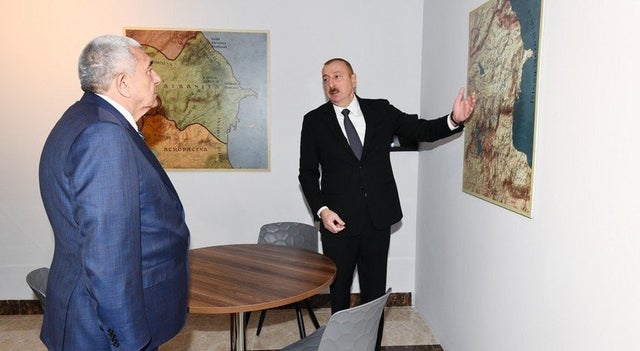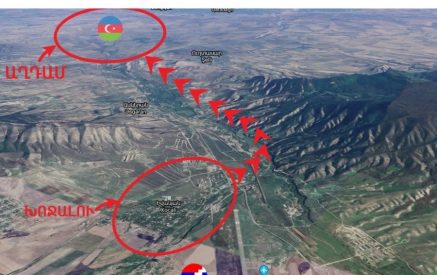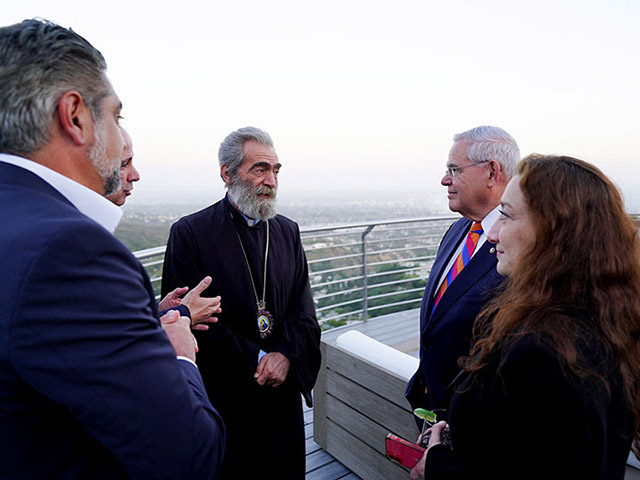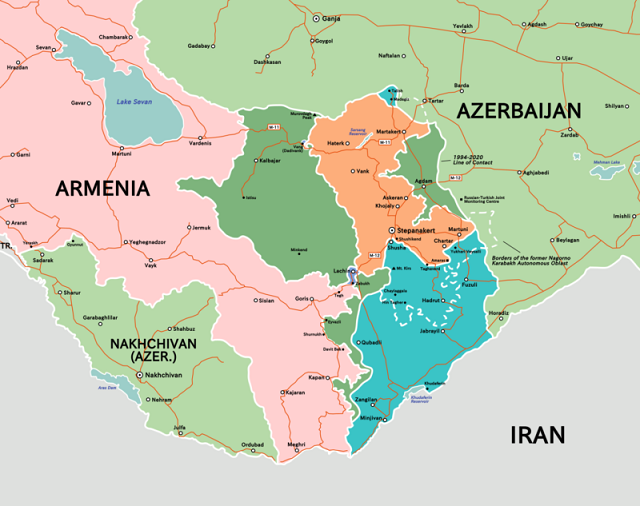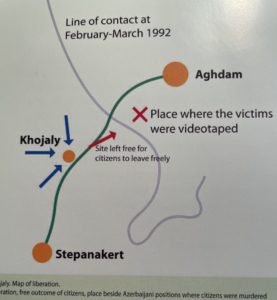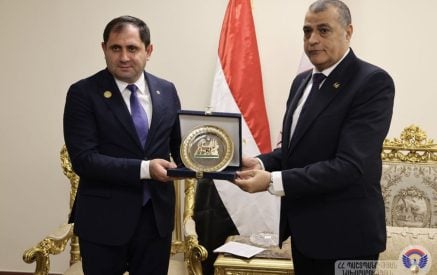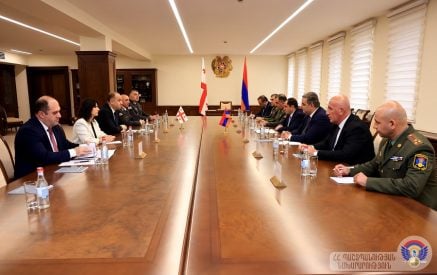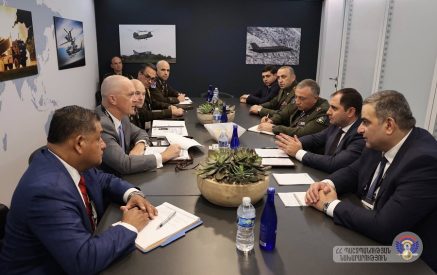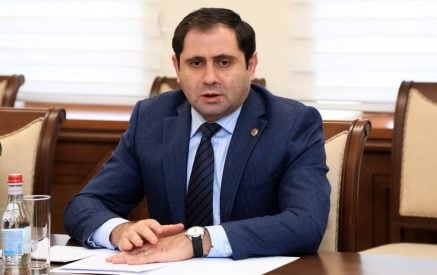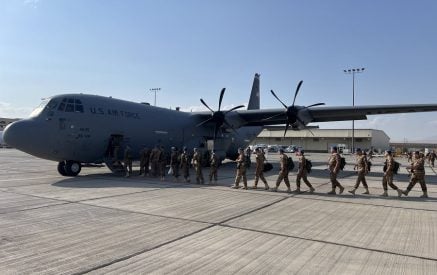The Armenian Weekly
On Monday, over 40 advocates from the eastern region participated in the fifth installment of the Armenian National Committee of America Eastern Region’s (ANCA-ER) Advocacy Workshop Series – “Azeri Propaganda” – led by ANCA National Board Member Ani Tchaghlasian and Worcester State University Associate VP for Academic Affairs Henry Theriault, PhD.
Tchaghlasian kicked off the workshop by framing Azerbaijan’s media and government campaigns through the lens of one particular event: the supposed Khojaly massacre. Unfortunately, local activists have become privy to the attempts of agents of Azerbaijan pushing for local and state commemorations of this fabrication. Given the danger this poses, one that shifts the entire narrative – in which Armenians are stripped of the opportunity to claim victimization – the ANCA-ER opted to cover this pertinent topic.
To set the historical stage, Azerbaijan attempted to ethnically cleanse the Armenian inhabitants of Nakhichevan, Khojaly and parts of Artsakh. Although they failed to do so in Artsakh, they were successful in both Nakhichevan and Khojaly, so much so that the regions flipped from predominantly Armenian to Azeri within 34 years.
Read also
In 1988 at the height of the Artsakh liberation movement, the outcry through protests was met with hostility from Azerbaijan: the pogroms of Sumgait (February 26 to March 1, 1998), Kirovabad (November 1988), and Baku (early January of 1990). Prior to the Artsakh liberation movement, close to half a million Armenians inhabited Azerbaijan proper, all of whom were forcibly removed by the same tactics that the Ottoman Empire utilized during the Armenian Genocide of 1915.
Beginning in late 1991, Azerbaijani forces assailed the city of Stepanakert. The only airport located in the Nagorno-Karabakh Republic (NKR) oblast was found within the borders of Khojaly, which was one of six locations responsible for bombarding the city of Stepanakert for well over 100 days. Under siege, with supply routes cut off, a lack of electricity, water, food, and medicine allowed for mass starvation to strike. The siege of Stepanakert has been compared to the Nazi siege of Leningrad during the Second World War.
In a desperate situation and with no end of bombardment in sight, the NKR liberation forces identified Khojaly as a tactical location that would strategically help end the assault. The Khojaly events in question took place the nights of February 25 and 26 of 1992, just before the first liberation of Shushi. For months prior to the operation, the mayor, Azeri combatants and civilians were warned that the forces were going to attempt to take Khojaly. Although they were aware of what was to come, leaders in Baku decided not to evacuate the citizens with 500 Azeri combatants scattered among them. The mayor of Khojaly requested assistance to depopulate the city. His calls were ignored, which is speculated to be due to festering internal strife.
On the evening of the 25th, the NKR forces arrived and an exchange of fire occurred between the two sides. In their previous warnings, the Armenian forces strongly emphasized that they would leave a corridor open for the civilian population to peacefully evacuate Khojaly. Not only were the mayor and combatants made aware of this corridor, but the Armenians went to the lengths of distributing leaflets to provide citizens the opportunity to plan accordingly, which has since been confirmed by third party sources. As evident through their inaction the Azeri government prevented the escape of their own citizens, a truth confirmed by the Azerbaijani president at the time. Although some civilians were able to utilize the corridor, some were still caught in the crossfire.
Prisoners of war were returned with no preconditions within a month in the states in which they were found. Tchaglasian emphasized that Azerbaijan was given the opportunity to collect their dead, which would be reckless on the side of the Armenians if a massacre had in fact been carried out.
Pictures of the deceased Khojaly residents were displayed subsequent to the events in which they were fully clothed. However, by March 2nd the same bodies, this time arranged to look like they were disrobed, had been tortured post-mortem, a fact that was confirmed by Azeri journalist reports at the time.
In the map image presented here, the red X represents the location where the supposed massacre took place, which isn’t in Khojaly itself but rather on the Azeri side on a piece of land that Armenian troops did not have control over at the time. With no investigation into why civilians were not evacuated, who shot the escaping civilians, or frankly any evidence at all, Azerbaijan has gone to great lengths to perpetuate this myth. Tchaglasian displayed images that Azeris claim as photo evidence, when they are in fact taken both in different parts of the world and at different times completely unrelated to the events in Khojaly: including photos from Kosovo, Israel and an earthquake in Turkey.
Dr. Theriault explained the broader context in which to consider this: Armenians defending themselves amidst an 80-year campaign of ethnic cleansing, aimed at realizing a goal of Pan-Turkism. While Azerbaijan violently expelled Armenians from their country, hundreds of thousands of Azeris were safely transferred to Azeri territory. With such a significant contrast being left out of history, Azerbaijan is further able to shift the narrative.
He offered an approach that may be deemed useful when combatting Azeri propaganda, “It is crucial to highlight at every possible moment that what we have seen, especially in the last year, is an extension of the 1915 Genocide; this is about completing the Pan-Turkic process so that Turkey can unite with Turkic peoples.”
Theriault went on to explain that this is not solely from the Armenian viewpoint but rather something about which both Erdogan and Aliyev repeatedly boast. Their goal of eliminating the Armenian presence is further evident through Azerbaijan’s encroachment on Armenia proper just this summer. Without clear condemnation, Azerbaijan is able to translate their vision into direct military action, all while glorifying it.
It is further connected to the Genocide because of it’s effectiveness; it has been propagandized to allow for Armenians to become the scapegoat. Azerbaijan is able to distract their oppressed citizens by scapegoating the enemy. The economy that backed the recent Artsakh war was only made possible through “Turkey’s expropriation of Armenian, Greek and Assyrian wealth,” added Theriault. In reiterating his thought, he noted, “Armenia is owed reparations – just as any perpetrator owes their victim long term viability.”
In the past year, Azerbaijan has had access to Turkey’s propaganda machine and has utilized the method of “fabrication of victimization.” When this is the norm, it is not necessary for Azerbaijan to deny Armenia’s claims of victimization because they have stripped Armenia’s right to make such claims. Their narrative is dangerously dominant in that rather than being on the defensive, they work on the offensive – going so far as fabricating genocide without any legal or evidentiary basis. Nonetheless, their propaganda is just that powerful; they are able to sell their version of history, with Khojaly standing as just one example.
The actions of the Azeris are best framed by the acronym DARVO: Deny, Attack, and Reverse Victim and Offender. Essentially, by denying history and attacking the victim, Azerbaijan is able to reverse the roles of victim and offender, manipulating individuals into believing they have fallen victim to Armenian offenders. To address Azeri claims that Khojaly was a genocide, Theriault explained that “no serious legal authority or scholar will call it a genocide.” Furthermore, he pointed out that the fabrication of genocide as well as the use of the term in a cynical and manipulative manner is “an insult to real genocide victims.”
In the broader context of the ethnic cleansing campaign of the 1990s, Azerbaijan deliberately chose one case to fabricate, while ignoring all the rest. Without taking into consideration whether the international community trusts this false version of history, once the question of genocide is posed, the truth is undermined. Furthermore, Theriault delved into the issue of intent – one that is a basic tenet of genocide. As portrayed through the lack of evidence, their claim becomes baseless. The events of Khojaly, by definition, could not even be considered war crimes – based on the NKR forces’ identification of Khojaly as a military target and their attempts to eliminate civilian casualties via the accessible corridor, which are well within the parameters of international rules that govern warfare.
It is the responsibility of every Armenian to be aware of the perpetuation of such propaganda and push back in whatever way we know how, be it in the context of Khojaly or in the broader fight to combat Azeri propaganda. Whether it be writing articles, discussing it with your local officials, or educating friends on social media, we must be ready to fight. An explorable asset is looking to build solidarity with others as our struggle is interconnected. Our best tool is the truth and we must utilize it to expose the propaganda.
The ANCA-ER will continue its advocacy workshop series on August 30 with “Traditional & Social Media.” Register online. You will be sent a Zoom link that grants you access to all workshops. If you’ve already registered, there is no need to register again for each workshop.
Nairi Diratsouian
Nairi Diratsouian is a rising senior at Ramapo College of New Jersey. She is pursuing a degree in psychology with a triple minor in public policy, political science, and crime and justice studies. On campus, Nairi serves as the vice president of the Psychology Affiliation and the Armenian Students Association. Currently, she works as the communications specialist for the ANCA-Eastern Region and serves on the AYF Central Hai Tahd Council as well as the New Jersey “Arsen” Executive. Nairi’s passion for her heritage is evident through her participation in the Hamazkayin of New Jersey Nayiri Dance Ensemble, Homenetmen of New Jersey, ARS “Shakeh” Chapter, ANC of New Jersey and the Hovnanian School Alumni Association.



















































